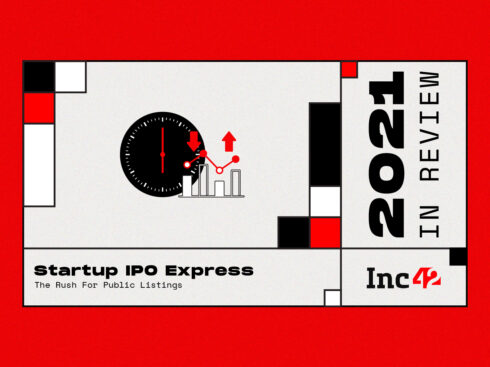SUMMARY
Public markets are the litmus test that determines the true value of a company
As companies get closer to IPO, they should be measured on metrics that resonate with public market investors
Also, good governance is imperative that needs to be practised since the early stage of a company
The past 12 months saw four glaring examples of Venture funded companies going public or making failed attempt to go public viz. Lyft, Uber, Slack and WeWork. This represented an equal mix of B2B and B2C companies. The following table represents a snapshot of some key metrics.
The last valuation is being done by reputed venture funds. All of these companies had a very strong brand presence, they had a broad customer (user) base, were category leaders (often creators) and had raised several rounds of capital. Notwithstanding all these factors, the hype surrounding these companies and, in most cases, their charismatic founders, they have floundered when they hit the public markets.
It is a cardinal truth that public markets are the litmus test that determines the true value of a company. If such well-regarded and highly valued privately held companies trade at a discount or have to abort their plans to go public, it is similar to an aircraft, cruising at an altitude but suddenly nosediving as if it hit an air pocket.
We have tried to analyze some of the reasons behind this phenomenon and have made an attempt to prescribe a few solutions that would perhaps enable private companies to transition effortlessly and without much investor angst when they go public.
Business Evaluation Metrics Conundrum
Fundamentally, we believe there is a chasm between the private and public investors’ method to evaluate and value businesses. It is imperative to bridge this chasm or disconnect by private venture investors and their companies if they have to avoid such a regrettable and an embarrassing situation (as above) while planning their IPO.
Public markets value companies based on metrics like:
- Free Operating Cash Flow: measures cash generated from operations but not funding and net of Capex.
- ROCE: shows how effectively have companies used capital to attain the present size.
- Profitability: EPS or EBITDA that demonstrate pricing power and effectiveness of execution.
- YOY Growth: indicates market size and headroom.
- Quality Of Management: ability to withstand and beat the competition, deliver predictable performance and instill a high level of corporate governance.
There are, of course, other factors like quantum of debt, IP, regulatory aspects etc. However, our focus in this paper is largely on the performance metrics of the business.
Private companies on the other hand value companies on a completely different set of factors. If one studies the private markets and the factors that are influencing VC’s judgement towards valuation, it makes for interesting reading.
Some of those are listed below:
- GMV: Gross Merchandise Value or the gross value of goods traded on the platform. The net revenue to the company varies and is normally opaque to the outside world.
- Users: Customers that use the product or platform. A high user base often translates into better valuation as it shows the popularity of the platform/proposition. Multi-sided platforms like Uber, for instance, have cab drivers and customers, and the more the number, the more is the strength of network effects. It also indicates the extent of domination of a company in that category.
- MRR or ARR: Monthly recurring revenue or annual recurring revenue, where recurring is not well defined in practice.
- Contribution Margin or Gross Profit: Most privately held companies are content to measure and claim success when they turn gross margin positive. However, this in our view completely disregards your operational costs and how efficiently SGA expenses are managed and controlled. And it is no secret that if you do not measure, you cannot manage.
- ACV or Annual Contract Value: This represents an MSA or a frame contract that states the intent of a customer to engage with a startup and a reflection of its budget that it is willing to commit for the engagement. However, this depends on the execution of the contract and milestones before such revenues are realized. ACV, therefore, has to translate into revenue and cannot be taken for granted.
- Runway: This broadly indicates the time the startup has before it runs out of the capital to fuel its growth or sustain its existence. It is a useful metric to assess and take steps to control expenses and / or prioritize actions. However, our experience is that VCs need to look at “runway” in the context of time to break even or turn profitable along with capital burn-in equal measure. Continually tracking the timing of next fundraise also sends a wrong signal to the founders that perpetual access to capital is paramount to sustain and build the business and often takes precedence over operating metrics in their minds which is damaging for the business.
- Dilution: It is a case of the tail wagging the dog. To keep entrepreneur interest in the company, investors always look at dilution at every stage of private funding and accordingly adjust valuation offered to startup. Public market valuation is independent of concern for dilution.
- Structuring: VCs protect their downside with covenants like liquidation preference & antidilution, a privilege not available to public market investor. This creates a chasm between valuation judgment of both markets. Once the companies go for IPO and these downside protection structures are removed, it is a given that there will be some moderation in the valuation given by the public market vis-à-vis the private market.
Most private companies are also evaluated on their market share, growth rates, market expansion, etc. but we will not delve into these aspects for the purpose of this discussion.
When we did a deeper analysis of how private companies are valued, we came to the following conclusion:
Evolution Of Evaluation Metrics With Funding Stages
Companies go through an evolution as they raise Series A, B, C, D and later funding rounds. As companies evolve, the metrics on which they are evaluated also need to reflect the evolution. For example, at an early stage, one would evaluate companies based on its product completeness which can later on graduate to market traction, Unit Metrics and ideally should further mature into profitability, market share, quality of management, growth etc.
If you still have companies at Series F level being measured by MRR or ARR and contribution margin (instead of EBITDA), then there is something fundamentally wrong with this thinking. We believe that as companies get closer to IPO, they should be measured on metrics that resonate with public market investors.
Chasing the Wrong Metrics
Most private companies claim success based on the extent of capital raised. In many B2C businesses, without doubt, it gives the company a better edge to compete as such companies are creating new business models and often have to burn cash to attract customers. Many B2C businesses are also “winner take most” if not “winner takes all” plays and hence there is some merit in thinking that capital is a strong moat.
However, problem arises when businesses start thinking that capital is the only moat and viability takes a backseat. Businesses ought to measure how much of incremental $ invested results in incremental growth and incremental profitability.
Several times, we have a situation where extra $ invested in businesses result in more losses. Uber raised $2.8B in 2018 alone. Comparing Uber’s 2018 & 2019 Q2 results show that the revenue grew from $2.7B to $3.1B which is a 14% improvement, but the net loss adjusted for one-time expense increased by 36.7% from $878M to $1.2B.
The situation is no different in highly funded Indian startups like Flipkart. Flipkart’s revenues from operations saw a 42% jump from $3B in 2018 to $4.4B in 2019, while the net loss jumped by 85.9% from $295M in 2018 to $548M in 2019.
In recent times, we are also seeing Indian companies paying upwards of 20 times for earning a single buck. This is an unacceptable situation. Public market investors look at capital-efficient companies (ROCE) and cannot reconcile to business models that guzzle capital but have a nebulous path to profitability.
Reward For Capital Efficiency
The table below compares different metrics of various tech companies which IPO’ed in recent times. On comparing companies which have raised a similar amount of capital till their IPOs, we see that companies with better fundamental metrics like profitability & positive free cashflows are valued much higher than companies with negative earning & free cashflows.
PS: We have not included Uber in the above graph as it has very high negative free cashflows of approximately -$1.3B & the ratio Valuation at IPO/Capital raised prior to IPO of 3.4x
Entrepreneurs and Investors, both need to appreciate that it’s not just the headline valuation numbers, but the value generated from the efficiently deployed capital, that drives the valuation of the company.
Issues Of Corporate Governance
The last and the most critical aspect is the level of governance private companies have or is enforced by private investors. This is where most lapses have come to light. The case of WeWork where there were several transgressions like related party transactions, disproportionate gain to founder for licensing “We” brand to the appointment of relatives in key positions to giving loan to the founder to buy properties and lease it back.
If such transgressions are not addressed in a timely manner, when these companies hit the public markets, it opens a can of worms. We believe that good governance is imperative that needs to be practised since the early stage of a company.
If public market investors are sceptical of the accounting practices, disclosure quality, management integrity and behavior, there will be a trust deficit which will manifest into the value they ascribe to these companies.
To conclude, there is a need for the private investor fraternity to measure and manage businesses on the right metrics. Only the right metrics and right questions will drive the right behavior in the founders to run and scale their businesses. There is a lot at stake for private venture funds and the founders and the earlier they make the transition, the better it is for them and the ecosystem.
[The article is co-written by Shailesh Ghorpade, Managing Partner & CIO, Nihar Ranjan, Venture Partner and Rishabh Bardia, Associate at Exfinity Venture Partners. The views expressed are personal and need not necessarily reflect those of the Fund.]



























